PenHero 365: Parker No. 60 Awanyu "Aztec" Gallery
by Jim Mamoulides, January 7, 2012
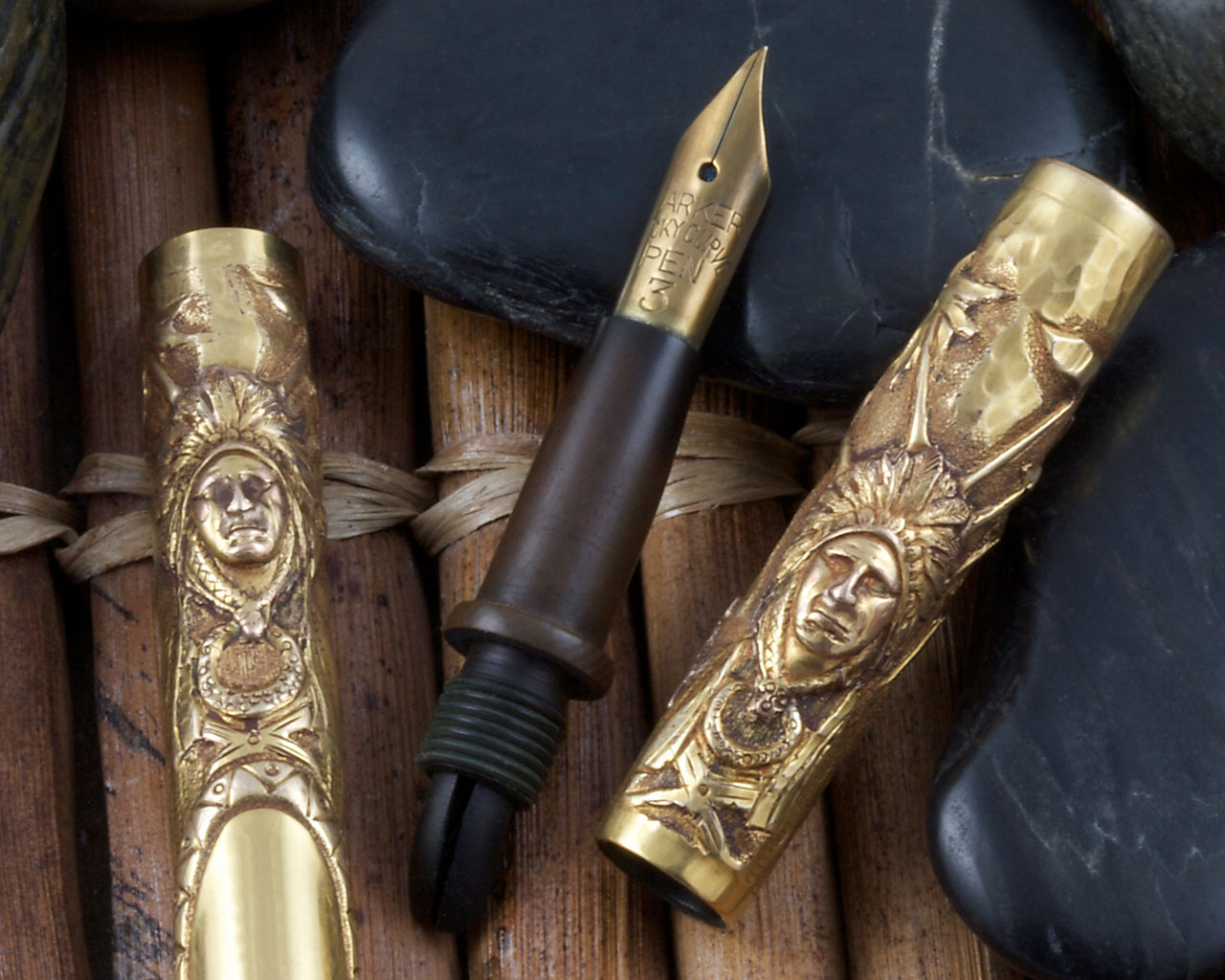 Parker No. 60 Awanyu detail of indian chief and nib section
Parker No. 60 Awanyu detail of indian chief and nib section
Awanyu's photo shoot
As a compliment to my article on the Parker No. 60 Awanyu "Aztec," I wanted to take my own photographs of the pen that could really show off how impressive it is, and the owner of the pen was able to come by for a visit. The pen belonged to the owner's great grandfather. Four years after he came to having it, he decided to do some research, contacting Parker and numbers of pen collectors to find out more about the pen and its value. He was pleased to find out how rare it was and after I was able to research and produce a detailed article on it, he came by with the pen to let me photograph it. Needless to say, he wishes to keep his privacy, but if you are interested in contacting him, he can be reached at parkeraztec@yahoo.com.
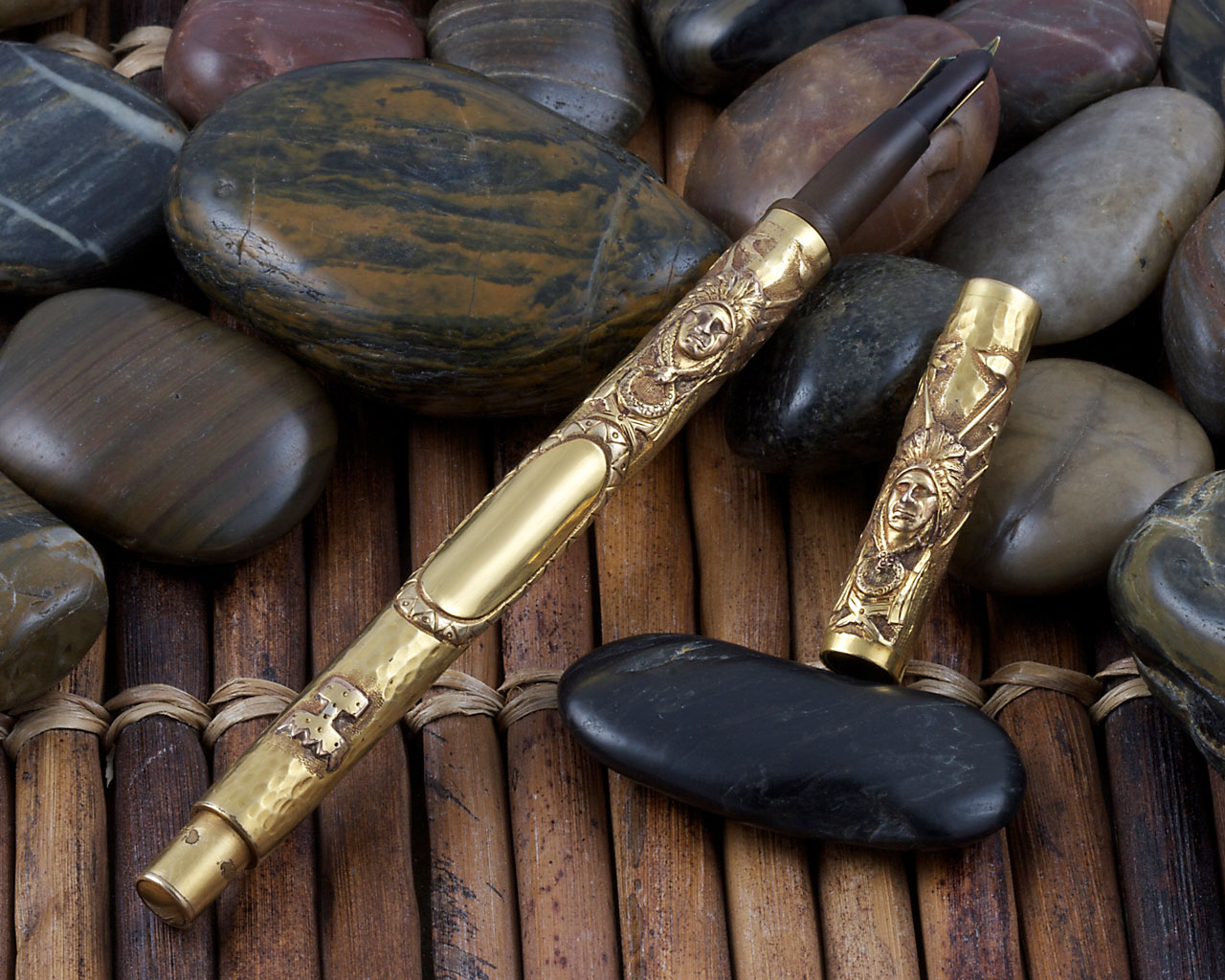 Parker No. 60 Awanyu showing indian chief designs and chalice design at the base of the barrel
Parker No. 60 Awanyu showing indian chief designs and chalice design at the base of the barrel
Surprisingly, for a pen as "famous" as the Parker "Aztec," it took quite a bit of work to find out the real story on the pen. George S. Parker introduces the pen in the August, 1911 issue of Side Talks, the internal Parker Pen Company magazine. He relates how the previous winter he traveled to Santa Fe, New Mexico and visited the museum of the Archeological Institute of America. Parker saw what he was told was an Aztec design called, "Awanyu," and obtained permission to copy the design for a line of pens.
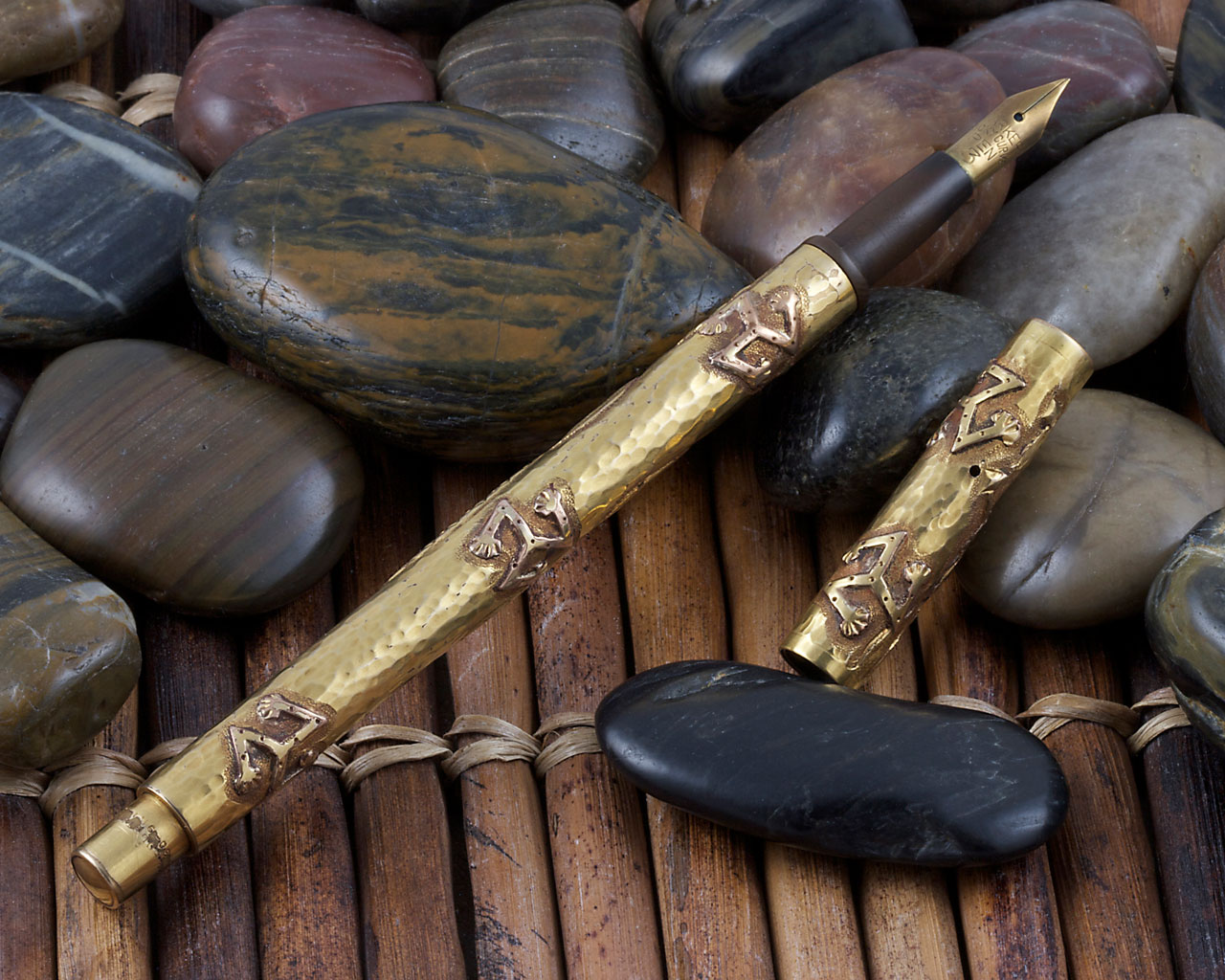 Parker No. 60 Awanyu open showing the five three armed triskelion designs
Parker No. 60 Awanyu open showing the five three armed triskelion designs
Though it is not clear in Parker's article, I believe that symbol Parker wanted to copy was the three armed triskelion design, which appears five times on one side of the pen, with two on the cap and three on the barrel. Parker introduced in 1911 a four arm swastika design on the No. 52 and No. 53 pens, and a form of the swastika was used by the Navajo in pottery and basket designs, indicating a whirling log, and representing a legend that was used in healing rituals. This may have been the inspiration Parker saw on the Navajo artifacts at the museum.
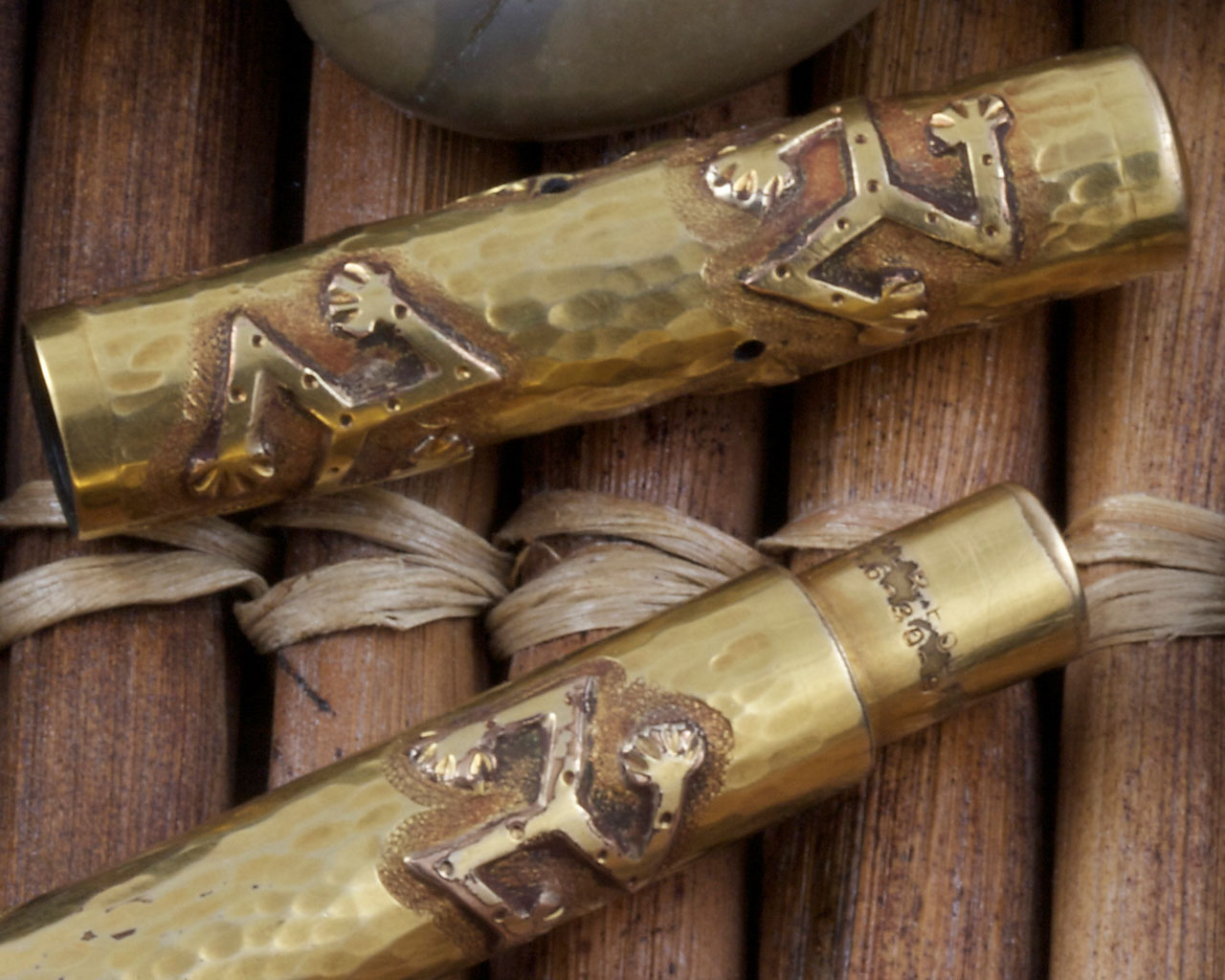 Parker No. 60 Awanyu cap and barrel detail showing the triskelion designs
Parker No. 60 Awanyu cap and barrel detail showing the triskelion designs
As to Awanyu itself, according to Wikipedia, "Awanyu (also Avanyu), is a Tewa deity, the guardian of water. Represented as a horned or plumed serpent with curves suggestive of flowing water or the zig-zag of lightning, Awanyu appears on the walls of caves located high above canyon rivers in New Mexico and Arizona. Awanyu may be related to the feathered serpent of Mexico— Quetzalcoatl. In some tribes Awanyu is believed to be a companion to the Kokopelli. Awanyu is a frequent motif on Native American pottery of the Southwestern United States." If you look closely, you can see the snake element on the pen just below the Indian Chief's head, almost as if it is a necklace. The snake is actually forming a figure eight, with the mouth biting the tail.
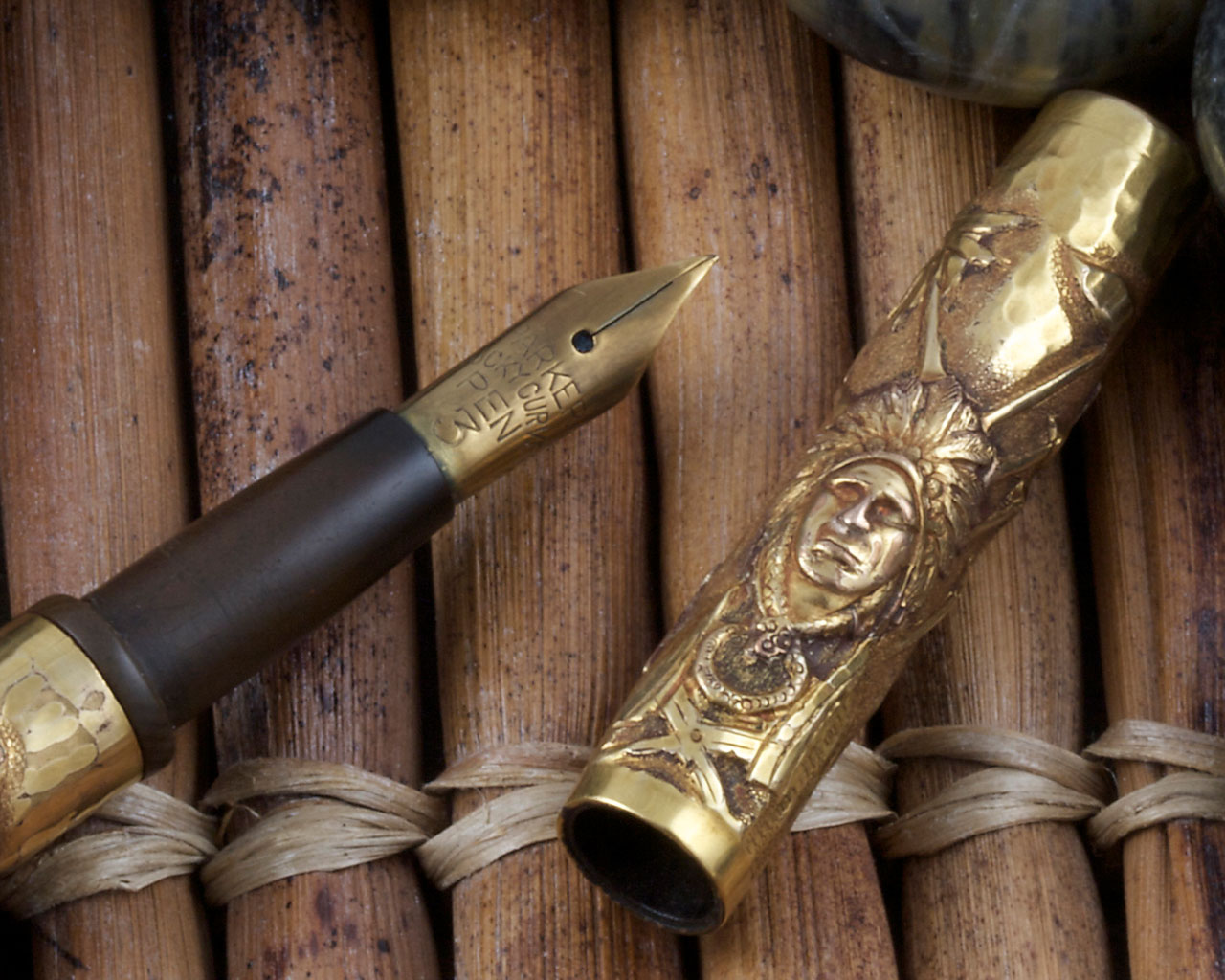 Parker No. 60 Awanyu indian chief design detail, note the snake in figure eight around the chief's head
Parker No. 60 Awanyu indian chief design detail, note the snake in figure eight around the chief's head
Parker first introduced a snake design in 1907 on the No. 37 and No. 38 Snake pens. At least having the snake correlates to the Awanyu legend. One could speculate that the Awanyu pen is a combination of American Indian, snake and swastika-like designs that were liked by George Parker. The lack of actual Aztec design elements leads some collectors to believe that Parker fancifully projected the Aztec idea onto a compilation of Native American designs.
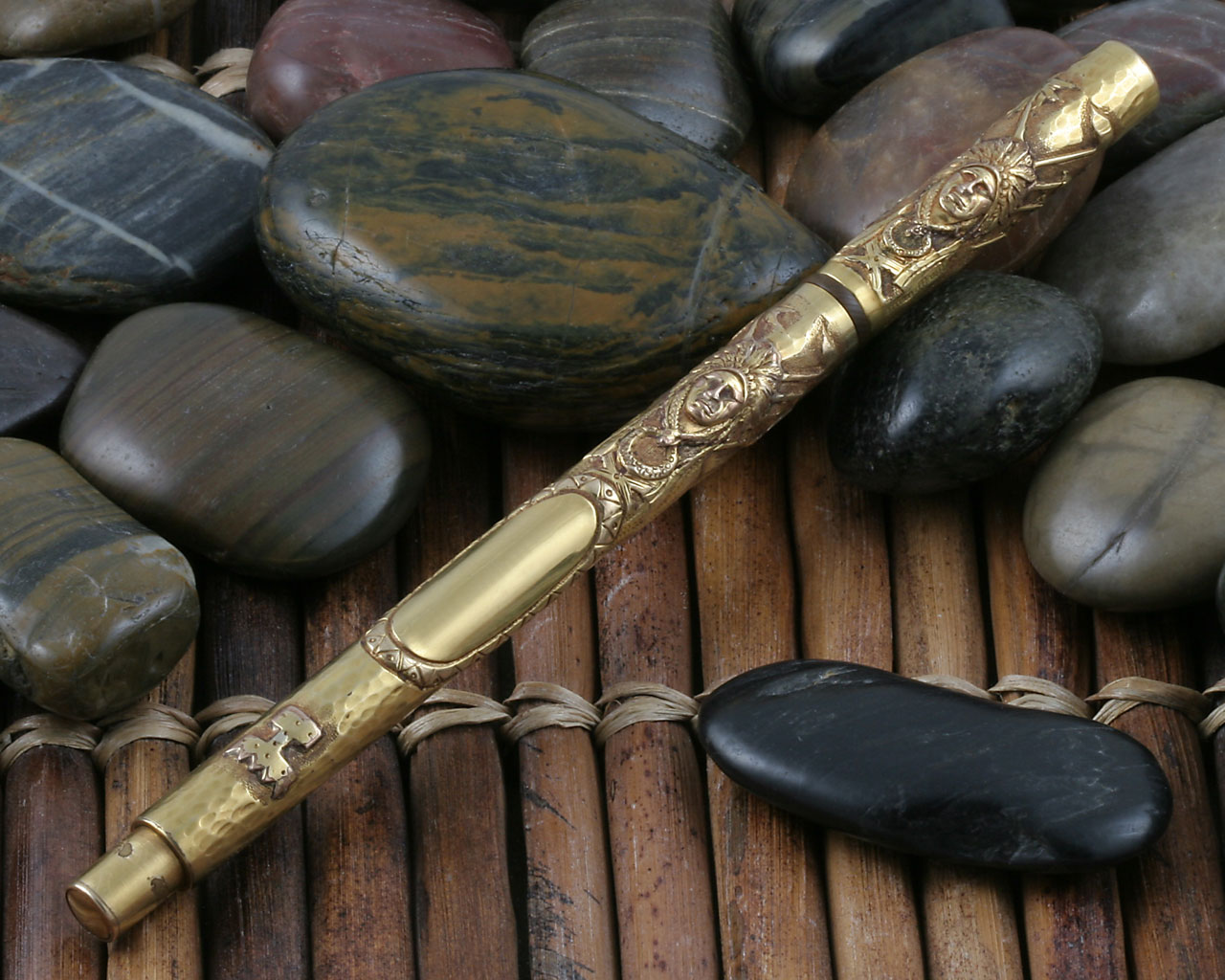 Parker No. 60 Awanyu closed showing the two indian chief designs
Parker No. 60 Awanyu closed showing the two indian chief designs
The Parker No. 60 Awanyu was a very expensive pen, having a full 18 karat gold filled overlay, it retailed for US $20.00. At that price point, it's not likely that many were sold, and a write up on the pen from the Parker Archives states that, "A total of only four to six Aztecs are known to exist." and "In January 2000 a Sterling Silver Aztec identical to the example supplied was sold for £54,300 at Bonhams in London to an Italian collector."
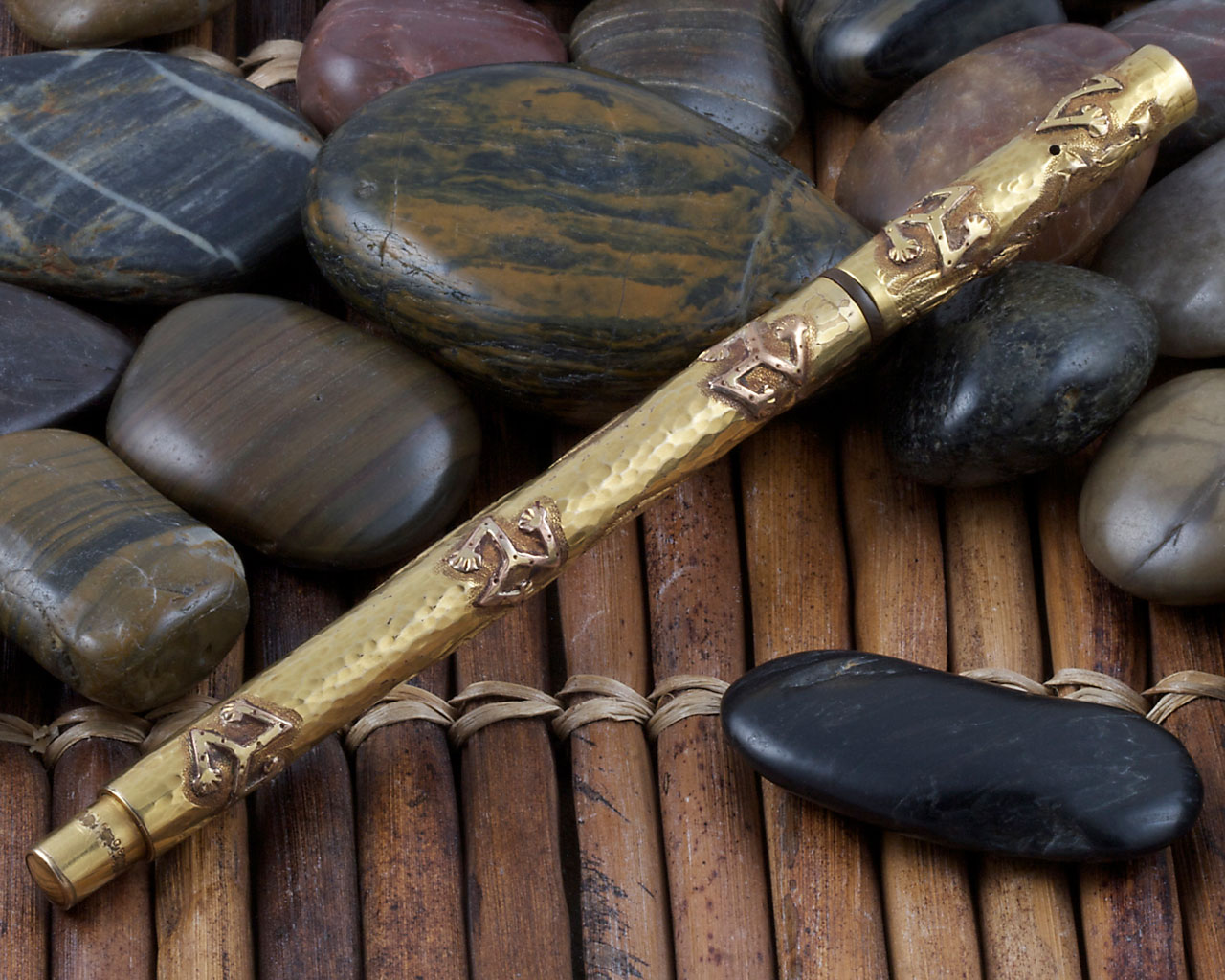 Parker No. 60 Awanyu closed showing the five three armed triskelion designs
Parker No. 60 Awanyu closed showing the five three armed triskelion designs
The full overlay Awanyu, or as it is more commonly known, Aztec, may be one of the rarest Parker straight holder style eyedropper pen models. There were many types of jewelry maker overlays on eyedropper pens in the early 1900s, but this design was unique to Parker. There are three principal design elements on the overlay: the head of an American Indian Chief in full headdress, the three armed symbol of mystic power, and the "chalice" shape. All of the designs are in very high relief on both the cap and barrel. Close inspection shows a great deal of hand detail and tooling work on each of the design elements, which are then framed with fine hammer work, and then broad hammering done to add texture to the remaining smooth, open areas on the cap and barrel.
You can read more about this great pen, and the other Parker Awanyu models in the article, Parker No. 60 Awanyu "Aztec" c1911-1916.
References
"Awanyu," Wikipedia
Collectible Fountain Pens, Glen Benton Bowen, Copyright © 1982, L-W Book Sales, Gas City, IN, USA
Fountain Pens, Johnathan Steinberg, Copyright © 1994, Quintet Publishing Limited, London, England
Fountain Pens of the World, Andreas Lambrou, Copyright © 1995, Zwemmer, London, England
Fountain Pens: United States and United Kingdom, Andreas Lambrou, Copyright © 2000, Phillip Wilson Publishers Ltd, London, England
"Navajo Nation," Wikipedia
Parker c1910 Full Awanyu Aztec overlay of Sterling silver on Black Hard Rubber eyedropper filler pen, Parker Archives, Parker Pen Company, Newhaven, UK
Parker Calendar, Cheryl Hayes, Copyright © 2002, Product Quality & Development Dept, Parker Pen Company, Newhaven, UK
Parker Catalog, 1914, Parker Pen Company, Janesville, WI, USA
Parker Catalog, 1916, Parker Pen Company, Janesville, WI, USA
Parker Catalog, 1918, Parker Pen Company, Janesville, WI, USA
"Parker Lucky Curve and other Parker Pre Duofolds 1894-1929," Copyright © 1995-2010 Tony Fischier and The Parker Pen Company®/Sanford Ecriture
"Repoussé and chasing," Wikipedia
Side Talks, No. 7, January, 1911, Parker Pen Company, Janesville, WI, USA
Side Talks, No. 8, August, 1911, Parker Pen Company, Janesville, WI, USA
Side Talks, No. 9, December, 1911, Parker Pen Company, Janesville, WI, USA
Side Talks, No. 10, March, 1912, Parker Pen Company, Janesville, WI, USA
Side Talks, No. 11, November, 1912, Parker Pen Company, Janesville, WI, USA
"Swastika," Wikipedia
United States Patent number 512319, Google Patents
United States Patent number 606231, Google Patents
Interact
Comments on this article may be sent to the editor, Jim Mamoulides


